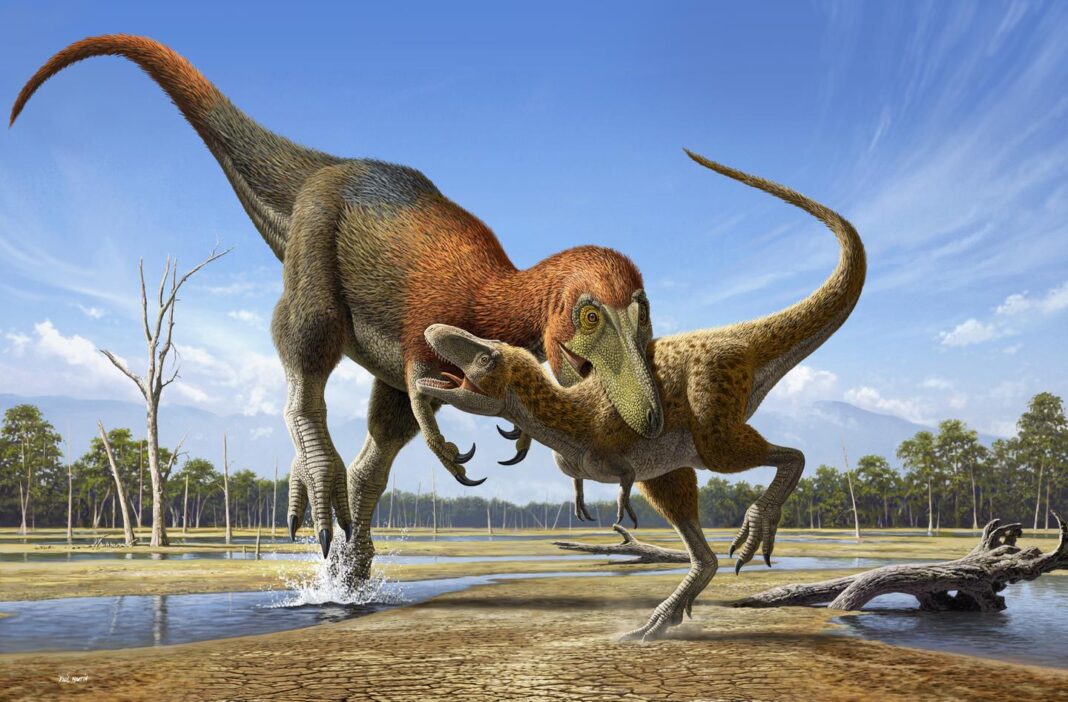The debate rages on about whether fossils of small tyrannosaurs were a distinct species or just juvenile T. rexes. A new study claims to have found evidence that a mini tyrannosaur species stomped around alongside its famous, giant cousin – but other scientists aren’t convinced.
is one of the most well-studied dinosaurs, and of course its is well documented. But several have been discovered since the 1940s, and paleontologists have gone back and forth on whether these constitute their own pygmy species, named or were just young T. rexes.
In 2020 a study from scientists at Oklahoma State University concluded in , finding that the bone microstructure and proportions of two specimens suggested they hadn’t yet reached full size. In the same way as you’d tell a tree’s age, growth rings in the leg bones indicated that at time of death they were 13 to 15 years old – right at the adolescent age for T. rexes.
But now, a new study from scientists at the University of Bath and the University of Chicago has re-examined several of these small specimens and reached the opposite conclusion – the bones belonged to a separate species. This is thanks to detailed analysis of the animals’ growth rings, anatomy and a newly identified fossil of a young T. rex.
First, the researchers measured the growth rings of the small tyrannosaurs’ leg bones, and found that towards the outside of the bones they were becoming much closer together. That would indicate that the dinosaurs’ growth rates were slowing, meaning they were almost full size. “If they were young T.
rex they should be growing like crazy, putting on hundreds of kilograms a year, but we’re not seeing that,” said Dr. Nick Longrich, co-author of the study. “We tried modeling the data in a lot of different ways and we kept getting low growth rates.
” From their modeling, the researchers estimated that Nanotyrannus would have grown to a maximum of between 900 and 1,500 kg (1,984 and 3,307 lb), and up to 5 m (16. 4 ft) long. That might not sound very “nano,” but it’s only about 15% the size of an adult T.
rex. Growth rings wasn’t the only line of evidence the team used. They examined a series of T.
rex and Nanotyrannus fossils and identified over 150 characteristics that seemed to differ between species. Besides the size of the animals themselves, Nanotyrannus tended to have narrower snouts, smoother teeth, longer legs and larger arms. “The arms are actually longer than those of T.
rex,” said Longrich. “Even the biggest T. rex, has shorter arms and smaller claws than in these little Nanotyrannus.
This was an animal where the arms were actually pretty formidable weapons. It’s really just a completely different animal – small, fast, agile. T.
rex relied on size and strength, but this animal relied on speed. ” Further evidence, the team says, comes from the lack of fossils bearing features of both Nanotyrannus and Tyrannosaurus. If one grew into the other, then there should be a sliding scale of features – but on closer examination, the team found no fossils with blended features.
They tended to fall into one category or the other, supporting the separate species hypothesis. And finally, the scientists claim to have identified a fossil from a young T. rex – and it doesn’t look like those attributed to Nanotyrannus.
This skull fragment had been gathering dust in a museum drawer for years, and was estimated to have come from an animal with a skull measuring around 45 cm (17. 7 in) long and a total body length of about 5 m. On closer examination, the researchers spotted features consistent with a Tyrannosaurus but not a Nanotyrannus.
Although the team says it looks like the end for the young T. rex hypothesis, other scientists don’t necessarily agree. “I’m not convinced that their interpretation is more accurate than ours,” Holly Woodward, an author of the 2020 study in the young T.
rex camp, told . Other experts say the skull fragment the team newly attributes to a young rex is too incomplete to be certain. This new chapter in the Nanotyrannus saga is an intriguing one, but it’s unlikely to be the last.
The research was published in the journal . Source: via.
From: newatlas
URL: https://newatlas.com/science/nanotyrannus-tyrannosaurus-t-rex-separate-species/



